#Phocoenidae
Text

Eastern Pacific harbor porpoise Phocoena phocoena vomerina
Observed by dhardwick3, CC BY-NC
#Phocoena phocoena vomerina#eastern Pacific harbor porpoise#Cetacea#Phocoenidae#cetacean#porpoise#North America#United States#Washington#Pacific Ocean#Puget Sound#Quartermaster Harbor
48 notes
·
View notes
Text
38 notes
·
View notes
Text
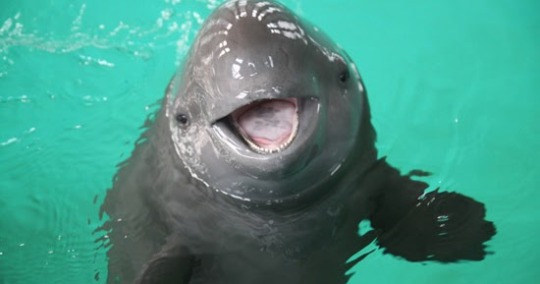




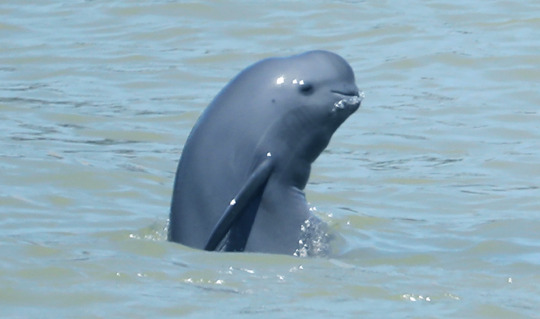

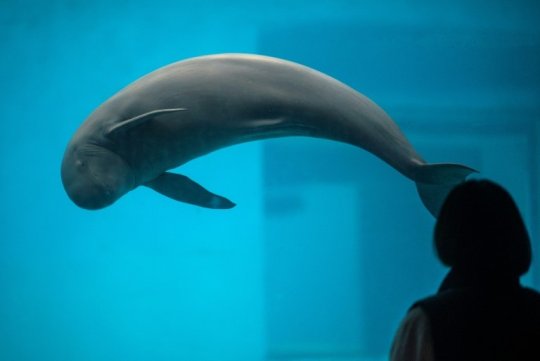

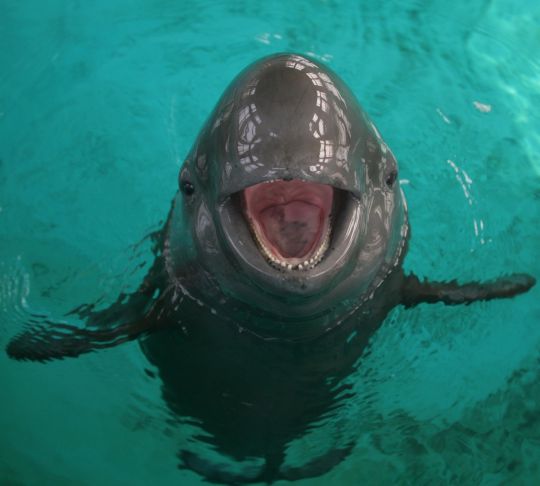
Neophocaena asiaeorientalis better known as the jiangtun or the Yangtze finless porpoise is a species of of toothed whale in the porpoise family Phocoenidae, is endemic to the Yangtze River in China. They are one of the world’s only freshwater porpoises and tend to be found in shallow bay areas, swamps, lakes, and estuaries where the feed upon various species of fish and crustaceans. Like most cetaceans they are a highly social species which lives in pods as little as 3 to as many as 20 individuals. Rather than vocalizing via chirps and whistles, as most dolphin species do, these porpoises use echolocation and ultrasonic pulses to communicate with one another. They are also know to sleep in shift like cycles, with active porpoises occasionally supporting there lethargic compatriots with there backs. Tho this is particularly common with parents and there offspring. Reaching some 5 to 7.5ft (1.5 to 2.3m) in length and 100 to 160lbs (45 to 72kg) in weight, with males being larger than females, the Yangtze finless porpoise is one of the smaller cetaceans. They sport large curved flippers with pointed tips, a stocky grey to black body that slims towards the tail, and a unique very steep head lacking a beak. Instead of a dorsal fin, these porpoises have a dorsal ridge or "groove" that is covered in varying rows of tubercles. Breeding occurs in late spring and early summer, and after a ten to 11 month pregnancy a mother Yangtze finless porpoise will give birth to a single offspring called a calf. Under ideal conditions a Yangtze finless porpoise may live upwards of 30 years. The Yangtze finless porpoise is considered critically endangered and it is estimated that only about 1,000 remain.
#pleistocene pride#pleistocene#pliestocene pride#pliestocene#cenozoic#ice age#stone age#yangtze finless porpoise#porpoise#yangtze#river#jiangtun#whale#dolphin#freshwater
4 notes
·
View notes
Text
Thirteen species of extant odontocete evolved narrow-band high-frequency (NBHF) echolocation in four separate, convergent events. These species include the families Kogiidae (pygmy sperm whales) and Phocoenidae (porpoises), as well as some species of the genus Lagenorhynchus, all of Cephalorhynchus, and the La Plata dolphin. NBHF is thought to have evolved as a means of predator evasion; NBHF-producing species are small relative to other odontocetes, making them viable prey to large species such as the orca. However, because three of the groups developed NBHF prior to the emergence of the orca, predation by other, ancient, raptorial odontocetes must have been the driving force for the development of NBHF, not predation by the orca. Orcas, and, presumably, ancient, raptorial odontocetes such as Acrophyseter, are unable to hear frequencies above 100 kHz.[83]
this is fucked. four times??? i guess water is good for echolocation, higher transmission, but like. what the fuck. fish dont echolocate. what is going on here
Toothed whales emit a focused beam of high-frequency clicks in the direction that their head is pointing. Sounds are generated by passing air from the bony nares through the phonic lips. These sounds are reflected by the dense concave bone of the cranium and an air sac at its base. The focused beam is modulated by a large fatty organ known as the 'melon'. This acts like an acoustic lens because it is composed of lipids of differing densities.
It has been suggested that some smaller toothed whales may have their tooth arrangement suited to aid in echolocation. The placement of teeth in the jaw of a bottlenose dolphin, for example, are not symmetrical when seen from a vertical plane, and this asymmetry could possibly be an aid in the dolphin sensing if echoes from its biosonar are coming from one side or the other.[86][87] However, this idea lacks experimental support.
Echoes are received using complex fatty structures around the lower jaw as the primary reception path, from where they are transmitted to the middle ear via a continuous fat body. Lateral sound may be received through fatty lobes surrounding the ears with a similar density to water. Some researchers believe that when they approach the object of interest, they protect themselves against the louder echo by quietening the emitted sound. In bats this is known to happen, but here the hearing sensitivity is also reduced close to a target.[88][89]

theyre like goddamn bio-robots! a fat based sound lens! a fat-based sound channel! reflective bone and air sacs! its incredible! bats wish they had a structure this elaborate!
18 notes
·
View notes
Text
Daily… porpoise? Huh?
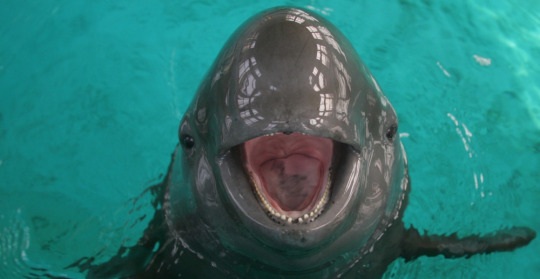
That’s right! Today I’ll be explaining a PORPOISE and saying some things on how it is different from a DOLPHIN.
A porpoise is a type of cetacean under the sub order Odontoceti. They are under the family Phocoenidae.
They are more closely related to the family monoceti rather than delfinidae, but they are not a species of dolphin but rather a separate group in general.
The shape of their teeth are less conical and more sharp as to compared to dolphins, therefore they are a completely different species all together. They also have flatter faces and short little beaks unlike MOST dolphins. However, some dolphins do indeed lack long beaks, but the teeth distinguishes them.
Like any other cetacean, they are closely related to ungulates such as camels, hippopotamuses, goats, or any other even toed ungulates.
Porpoises are usually smaller than dolphins, being 1-7 feet as to a compared to 3-26 feet. The smallest living species of the porpoise is the extremely endangered vaquita who is around 1-2 feet and is critically endangered with a meager amount of 10 left in the world.
They are usually fatter than dolphins, since they dive very deep and are covered in blubber that keeps them warm. Since they are mammals, they are also warm blooded.
Other than the vaquita, porpoises are otherwise very sustained and popular in the area in which they live. They live in salt or fresh water, akin to the Francisca dolphin.
Unlike dolphins, who have calves from 2-5 years, the porpoise may reproduce every year, but due to the lack of interest of research, the actual number is therefore unknown. It is believed they are pregnant for about a year.
Like dolphins, the porpoise makes echolocation using a series of air channels in the blowhole, creating high pitches squeaking noises. It can be safe to assume their sense of hearing is not as high as their sense of echolocation, being so closely related to the dolphin.
They have no neck movement, small eyes, no visible ears. Like the dolphin, they have a melon, blowhole, and similar systems of movement.
They tend to eat fish, invertebrates, and rarely among Odontocetes, Alge.
The finless porpoise is one of most interesting porpoises with having a lack of a fin, and their usage of carrying calves on their back with them.
Harbor porpoises are prolly the most known ones though, being in captivity.
TO RECAP:
dolphins: bigger, conical teeth, mostly salt excluding river dolphins and fransiciana
porpoises: small little fat guys awwww
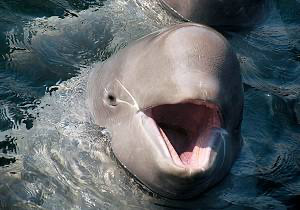
IMAGE SOURCES:
https://www.nhm.ac.uk/discover/news/2023/january/critically-endangered-yangtze-finless-porpoise-shows-signs-recovery.html
INFORMATION CHECKING SOURCES:
#porpoise#dolphin#fun facts#facts#marine biology#ocean#sea#water#compare#I probably spelt monoceti wrong#and other words#whoopsies
4 notes
·
View notes
Note
Regarding the comment “Orcas aren’t even whales you idiot they’re fucking dolphins lol”…. Because dolphins definitely aren’t whales!
For somebody who’s so sure they know more about cetaceans than you do, you’d think they’d have encountered the fact that neither whale nor dolphin are terms tied to strict taxonomic definitions (dolphins aren’t all one lineage after all), and whale is useful as a blanket term for all cetaceans (you know, like “toothed whales”, the things dolphins are). All the large beakless dolphins except Risso’s dolphins are called whales — indicating that if whale has any definition it’s a size-based one which killer whales absolutely would fit.
Here’s my message for that guy:
I’m an idiot? For referring to a member of the species Orcinus orca by the widely accepted colloquial name ‘killer whale’? Indeed, the orca is a member of the taxonomic family Delphinidae—the oceanic dolphins. But Delphinidae itself is but a subset of the superfamily Delphinoidea, which includes not only Delphinidae but also Phocoenidae (porpoises) and Monodontidae (belugas and narwhals). And Delphinoidea, in turn, joins with the sperm and beaked whales to form the cetacean parvorder Odontoceti—the odontocetes. More commonly know as…
THE TOOTHED WHALES.
#orcas are whales because they are dolphins and dolphins are a type of whale#orcas#killer whales#dolphins#whales#cetaceans#asks
10 notes
·
View notes
Text
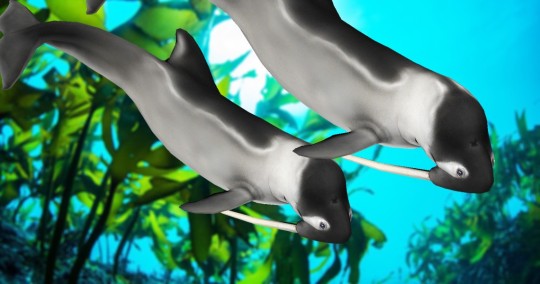
Odobenocetops
...................................................................
it is a member of the superfamily Delphinoidea, which includes the extant families Delphinidae, Monodontidae, and Phocoenidae, as well as several extinct families, including the Odobenocetopsidae to which the species belongs. This species was more closely related to narwhals than to dolphins. The animal measured 2.1 m and weighed between 150 and 650 kg. His joints show that he was very flexible, being able to turn his neck in a range of 90 degrees. The wide and short snout similar to that of a walrus, suggests that it fed on the seabed, where it would locate mollusks that sucked with a powerful tongue.
It had two fangs that projected towards the back of its body and in some fossils one fang was longer than the other. The right tusk was up to a meter long, while the left tusk was only 30 cm long.
..................................................................
..................................................................
2 notes
·
View notes
Text
Orcas have been harassing and toying with porpoises in the Salish Sea for 60 years, often to the point of killing them, but never eating them. Now, researchers think they know why.The perplexing behavior, dubbed "phocoenacide" or "porpicide," often involves several orcas (Orcinus orca) tossing porpoises (Phocoenidae) around for up to five hours, traumatizing and sometimes killing their plaything."I always liken it to a group of friends in a swimming pool and they have a ball between them and the object is to keep the ball above the water," study lead author Deborah Giles, an orca researcher at the University of Washington and research director at the non-profit Wild Orca, told Live Science.The orcas belong to a small and endangered population called southern resident killer whales that live off the Pacific coast of North America. They are fish-eaters, meaning it's unlikely they are playing with porpoises to consume them — deepening the mystery of why these orcas do it.Related: Scientists investigate mysterious case of orca that swallowed 7 sea otters whole"In some cases, you can barely see that there was any interaction," Giles said. "You might see teeth marks where the [killer] whale was clearly gently holding the animal, but the animal tried to swim away, so it scraped the skin."To find out why the orcas engage in this strange behavior, Giles and her colleagues pored over observational records from 1962 to 2020. Porpicide came and went in waves, Giles said, with orcas engaging in the behavior periodically and ditching it again, sometimes for several years. "It's considered a rare behavior, but when it happens, it's notable," she said.There are 78 documented cases of southern resident orcas harassing often very young porpoises, with 28 cases resulting in death from "killer whale-induced trauma," the researchers wrote in the study, published Sept. 28 in the journal Marine Mammal Science.Tossing porpoises around is almost certainly a form of social play, Giles said. But the aim of the game probably isn't to kill, as orcas sometimes continued throwing the porpoises around long after they had died. The activity may strengthen bonds between players and improve coordination and teamwork, according to a statement.Playing with porpoises could also teach orcas valuable survival skills. Baby harbor porpoises (Phocoena phocoena) and Dall's porpoises (Phocoenoides dalli) are similar in size to the southern residents' favorite food — chinook salmon (Oncorhynchus tshawytscha) — so "it's possible that the whales are using it to learn how to chase fish," Giles said.Young orcas and their moms often play with porpoises together, in what could be hunting lessons. "Sometimes they'll let the porpoise swim off, pause and then go after it," Giles said, which could test and fine-tune the orcas' coordination and prey-handling skills.Female orcas may also get involved for another reason. Playing with porpoises might be an attempt to provide care for the small mammals, in what is known as a "mismothering behavior," according to the study.RELATED STORIES—Opportunistic orcas have developed a new feeding behavior that appears to be killing them—Watch orca tear open whale shark and feast on its liver in extremely rare footage—2 liver-eating orcas forced an entire population of great white sharks to flee their home watersThis "might be due to their limited opportunities to care for young" of their own, Giles said in the statement. "Our research has shown that due to malnutrition, nearly 70% of Southern Resident killer whale pregnancies have resulted in miscarriages or calves that died right away after birth."The southern residents' porpicidal tendencies remain somewhat mysterious, Giles said, but the behavior appears to have spread through the population and across generations over the past 60 years."It is possible that porpoise harassing and killing behavior was spread via social learning," the researchers wrote in the study.
0 notes
Text
links: ‘are vaquita dead yet?’
Image sources:
Vaquita: https://www.ambermarineart.com/single-post/2016/07/22/keep-swimming-little-vaquita
Timeline: https://www.frontiersin.org/articles/10.3389/fmars.2021.644022/full
Papers mentioned:
¹The Ecological Role of the Vaquita, Phocoena sinus, in the Ecosystem of the Northern Gulf of California (2012) https://link.springer.com/article/10.1007/s10021-012-9618-z
²Reference genome and demographic history of the most endangered marine mammal, the vaquita (2020) https://onlinelibrary.wiley.com/doi/10.1111/1755-0998.13284
³Viability of the vaquita, Phocoena sinus (Cetacea: Phocoenidae) population, threatened by poaching of Totoaba macdonaldi (Perciformes: Sciaenidae) (2021) https://revistas.ucr.ac.cr/index.php/rbt/article/view/45475/46318
⁴An Economic Perspective on Policies to Save the Vaquita: Conservation Actions, Wildlife Trafficking, and the Structure of Incentives (2021) https://www.frontiersin.org/articles/10.3389/fmars.2021.644022/full
Text sources and further reading:
The Nature You See in Documentaries Is Beautiful and False (2021) https://www.theatlantic.com/culture/archive/2021/04/problem-nature-documentaries/618553/
'Forest gardens’ show how Native land stewardship can outdo nature (2021) https://www.nationalgeographic.com/environment/article/forest-gardens-show-how-native-land-stewardship-can-outdo-nature
Income inequality 'drives global wildlife trade' (2021) https://www.bbc.com/news/science-environment-56998291
Fungi are key to our survival. Are we doing enough to protect them? (2021) https://www.nationalgeographic.com/environment/article/fungi-are-key-to-survival-are-we-doing-enough-to-protect-them
We Need to Talk About Spider Conservation (2021) https://therevelator.org/spider-conservation/
Evaluating risk and resilience — what to do when you can’t save everything (2021) https://wwf.medium.com/evaluating-risk-and-resilience-what-to-do-when-you-cant-save-everything-1d63c095f327
blog: https://www.tumblr.com/opinionatedpartridge/723928425199484929/conservation-triage-are-vaquita-dead-yet
0 notes
Text
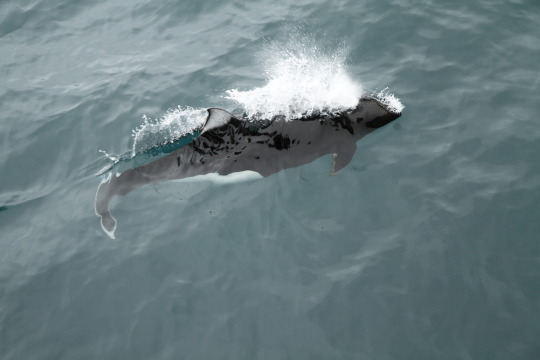
Dall's porpoise Phocoenoides dalli dalli
Observed by jujurenoult, CC BY
#Phocoenoides dalli dalli#Dall's porpoise#Cetacea#Phocoenidae#cetacean#porpoise#North America#United States#Alaska#Pacific Ocean#Gulf of Alaska#Resurrection Bay
8 notes
·
View notes
Text
Blog #9 Vaquita Marina cerca de la extinción
La vaquita marina es uno de mis animales favoritos provenientes de México, pero es un animal que actualmente está en peligro de extinción, aquí les hablaré de el porqué de su situación actual.
La vaquita marina también conocida como marsopa vaquita es uno de los cetáceos más pequeños del mundo y es el único mamífero marino mexicano miembro de la familia Phocoenidae.( Procuraduría Federal de Protección al Ambiente)

Las vaquitas marinas son endémicas del Alto Golfo de California en México, la vaquita prefiere las aguas cálidas y poco profundas, se encuentran cerca de la costa. Las vaquitas son consideradas animales solitarios ya que generalmente viajan en grupos de dos o tres. Se empiezan a reproducir a los 3 años de edad y tienen una cría cada 2 años. La vaquita puede llegar a vivir alrededor de 20 años. (Dra. María Luisa Martínez Vázquez)
La población de la vaquita ha disminuido a una velocidad alarmante, en 1997 eran alrededor de 570, en 2015 pasaron a ser menos de 60 y en 2016 apenas alcanzaba los 30 individuos. (Dra. María Luisa Martínez Vázquez)
¿Cuáles son las causas?
Hay varias causas pero la principal es la pesca ilegal y de arrastre, al usar técnicas como el uso de redes de arrastre en las que la vaquita queda atrapada, pero no es a la vaquita a quien están pescando si no que es al pez totoaba, con quien comparten hábitat. ( Beatriz González, 2022)
Muchos animales se encuentran en peligro por el uso de malas prácticas, la gente debe de hacer un esfuerzo más consciente por los animales y el ambiente.
Bibliografía
González, B. (2022, 4 febrero). Por qué la vaquita marina está en peligro de extinción. ecologiaverde.com. https://www.ecologiaverde.com/por-que-la-vaquita-marina-esta-en-peligro-de-extincion-1806.html
La vaquita marina. (s. f.). Inecol. Recuperado 2 de diciembre de 2022, de https://www.inecol.mx/inecol/index.php/es/2017-06-26-16-35-48/17-ciencia-hoy/773-la-vaquita-marina#:~:text=La%20principal%20amenaza%20es%20la,cual%20le%20ocasiona%20la%20muerte.
Ambiente, P. F. D. P. A. (s. f.). Vaquita marina, la marsopa más pequeña del mundo. gob.mx. https://www.gob.mx/profepa/articulos/vaquita-marina-la-marsopa-mas-pequena-del-mundo?idiom=es
0 notes
Text

jade has this shirt and whenever someone mentions it she spends the next two and a half hours trying to explain that orcas are in the family Delphinidae, whereas porpoises are in Phocoenidae, before eventually giving up when dave asks if a killer whale is a shark
7 notes
·
View notes
Photo

Vaquita (Phocoena sinus)
Photo by Don Johnston
#vaquita#cochito#desert porpoise#gulf porpoise#phocoena sinus#phocoena#phocoenidae#delphinoidea#odontoceti#cetacea#whippomorpha#cetruminantia#artiofabula#artiodactyla#euungulata#scrotifera#laurasiatheria#boreoeutheria#eutheria#mammalia#tetrapoda#vertebrata#chordata
9 notes
·
View notes
Photo

LAST CHANCE: NO MORE THAN 19 VAQUITA LEFT
The vaquita (Phocoena sinus), a small porpoise endemic to Mexico and one of the world’s most endangered animals could face extinction within a year if illegal fishing nets continue to be used. Numbers of the vaquita, which only lives in the upper Gulf of California in Mexico, may now have dropped to less than 9 according to research published in Royal Society Open Science.
Despite adoption of an emergency gillnet ban in May 2015, the estimated rate of decline remains extremely high. Estimated total population decline since 2011 is nearly 99%. Researchers estimate fewer than 19 vaquitas remained as of summer 2018. From March 2016 to March 2019, 10 dead vaquitas killed in gillnets were found.
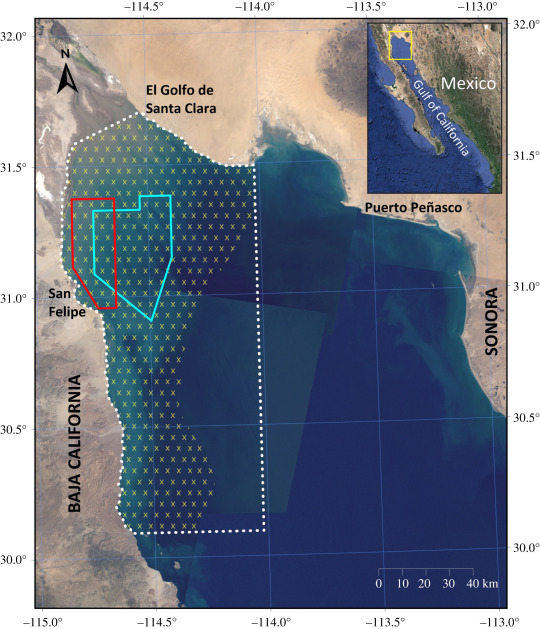
- Historical distribution of vaquitas (yellow hatched area). The Vaquita Refuge is outlined in blue. The gillnet exclusion zone (where fishing with gillnets is banned but other types of fishing is allowed) was given straight boundaries (dotted white) described by single latitude and longitude to facilitate enforcement. An enhanced enforcement zone (red) was recommended by CIRVA in the area where the remaining vaquitas are thought to spend most of their time that also has high levels of totoaba fishing effort.
The ongoing presence of illegal gillnets despite the emergency ban continues to drive the vaquita towards extinction.
Several studies implicate shrimp fishery bycatches to be responsible for the decline of the vaquita. Illegal fishing with gillnets for another critically endangered species endemic to the Gulf of California, the totoaba (Totoaba macdonaldii), is also linked to the decline of the vaquita, which is captured in for its swim bladders used in unproven chinese medicinal benefits
Photo: A vaquita, swiming at Alto Golfo de California, Mexico, by CIRVA/Tom Jefferson
Reference: Jaramillo-Legorreta et al., 2019. Decline towards extinction of Mexico's vaquita porpoise (Phocoena sinus) Royal Society Open Science.
[Photo description: an alive vaquita shows its head and dorsal fin above the water surface.]
#totoaba#vaquita#totoaba macdonaldii#phocoena sinus#mexico#cetacean#phocoenidae#science#marine biology#endangered#critically endangered#biology#pacific ocean
526 notes
·
View notes
Text
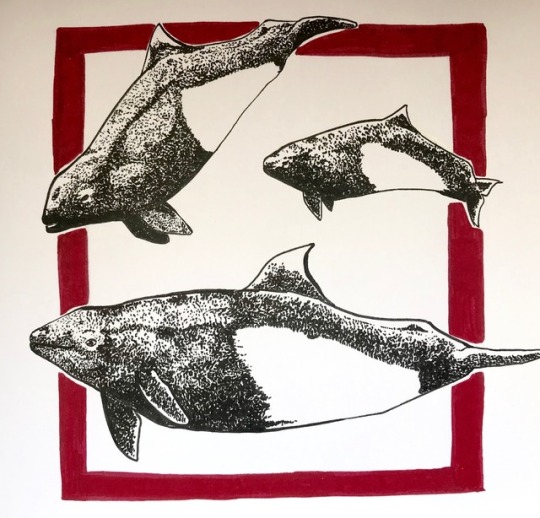
Cuties
19 notes
·
View notes
